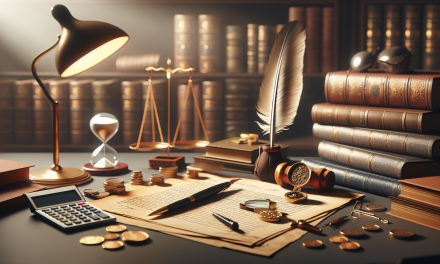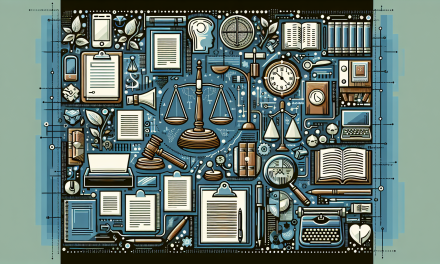Table of Contents
- Introduction
- Understanding Legal Memorandum
- The Importance of Legal Correspondence
- Key Elements of Legal Writing
- Structuring a Legal Memorandum
- Crafting Professional Legal Correspondence
- Best Practices for Legal Drafting
- Common Mistakes in Legal Writing to Avoid
- Additional Resources
- FAQs
- Conclusion
Introduction
When it comes to the legal field, effective communication is paramount. Legal professionals constantly find themselves drafting various documents, including legal memoranda and correspondence. Mastering the art of drafting these documents can significantly enhance one’s professional skills. This blog explores the intricacies of composing legal documents while helping you sharpen your legal writing ability.
Understanding Legal Memorandum
A legal memorandum serves as an essential tool for conveying legal analysis, advice, and information. This document typically contains a thorough examination of a legal issue, supported by relevant case law and statutes. Furthermore, the goal of a memorandum is to present a reasoned argument or legal opinion clearly and persuasively.
What Is the Purpose of a Legal Memorandum?
The primary purpose of a legal memorandum is to provide your recipient with a comprehensive understanding of a specific legal matter. It helps the reader grasp the legal principles, applicable laws, and any potential implications for the case at hand.
The Importance of Legal Correspondence
Effective legal correspondence plays a crucial role in maintaining clear communication between legal professionals, clients, and other stakeholders. This correspondence can include letters, emails, and notices. The primary goal remains the same: to convey accurate information in a professional manner. As a legal practitioner, continually honing your correspondence skills can bolster your credibility and foster trust with clients.
Why Is Legal Correspondence Vital?
Legal correspondence is vital because it lays the foundation for formal communication within the legal realm. It often serves as a record that can be referenced later, whether in negotiations, litigation, or informal discussions. Consequently, drafting these letters and emails with precision and care contributes significantly to your professional reputation.
Key Elements of Legal Writing
Understanding the essential elements of legal writing encourages more effective drafting. As you prepare legal memoranda and correspondence, keep the following elements in mind:
Clarity
Strive for precision and clarity in your writing. Avoid jargon and convoluted phrases that might confuse the reader. Instead, favor straightforward language that communicates your point effectively, ensuring even non-legal professionals grasp the matter.
Logical Structure
A clear and logical structure keeps your writing coherent. Organizing your thoughts into distinct sections or bullet points helps convey your argument methodically, ensuring the reader can follow your reasoning.
Authority
Your legal writing should reflect authority and confidence. Incorporate citations and references to establish credibility while constantly ensuring that the information you provide comes from reputable sources.
Structuring a Legal Memorandum
To draft a compelling legal memorandum, adhere to a structured format that enhances readability. Different law firms may have slightly varying formats, but generally, a well-structured legal memorandum consists of the following components:
Heading
Your memorandum should start with a heading that includes the date, your name, the name of the recipient, and the subject of the memorandum.
Introduction
The introduction succinctly outlines the legal issue at hand and provides background information necessary for understanding.
Statement of Facts
Present a clear account of the facts surrounding the case, detailing all relevant information necessary for the analysis.
Legal Analysis
This section forms the core of your memorandum, where you conduct a thorough analysis of the legal issues involved. Cite relevant laws and provide case law examples to support your argument.
Conclusion
Summarize your findings and provide your opinion or recommendation based on the analysis presented.
Crafting Professional Legal Correspondence
Just as with legal memoranda, effective legal correspondence requires an adherence to certain principles and best practices. Here are some helpful tips to consider:
Maintain a Professional Tone
Regardless of whether you are composing a letter to a client or an email to a colleague, maintaining a professional tone is critical. A friendly yet formal approach suits the legal context.
Be Concise and Direct
Since legal correspondence often serves as a record, ensure that your communication is concise and to the point. Eliminate unnecessary jargon or filler content that may dilute your message.
Proofread and Edit
Before sending any correspondence or memorandum, carefully proofread and edit your document. Even minor errors can seriously undermine your credibility. Take the time to enhance clarity and ensure grammatical correctness.
Best Practices for Legal Drafting
To excel in legal drafting, adhering to best practices is essential. Here are some of the most effective strategies for ensuring high-quality legal writing:
Practice Active Voice
Wherever possible, strive to use active voice in your writing. This approach instills clarity and decisiveness in your documents, facilitating a more engaging reading experience.
Utilization of Templates
While each memorandum and correspondence may address unique circumstances, maintaining templates for common documents can save time and ensure consistency in style and tone.
Understanding Your Audience
Tailor your writing style and content to suit your intended audience. Recognizing whom you are addressing allows you to choose appropriate language and level of detail.
Common Mistakes in Legal Writing to Avoid
Even experienced legal professionals may fall prey to common pitfalls in legal writing. Here are some mistakes to avoid:
Overusing Legal Jargon
While some legal terminology is necessary, overusing jargon can alienate readers. Strive for a balance that maintains professionalism without becoming inaccessible.
Ineffective Organization
An unstructured memorandum or correspondence can confuse the reader. Ensure that your writing follows a logical order and employs clear divisions between thoughts and ideas.
Additional Resources
If you’re looking to deepen your understanding of legal drafting, consider exploring additional resources such as:
- Mastering Contract Administration: Essential Strategies from Award to Completion
- Unlocking the Essentials: A Deep Dive into Contract Cost and Price Analysis
- The Ultimate Guide to Mastering Contract and Claim Management
- Mastering Advanced Contracts and Project Management for Success
- Unlocking the Power of Effective Contract Management: Your Guide to Advanced Skills and Knowledge
Additionally, if you’re serious about enhancing your legal writing skills, consider this Legal Memorandum & Correspondence Drafting Certificate Course that provides practical insights and techniques!
FAQs
What is a legal memorandum used for?
A legal memorandum is used to analyze a legal issue, provide legal advice, and communicate findings to clients or colleagues. It offers a structured review of relevant laws and case law.
How do I improve my legal writing skills?
To improve your legal writing skills, practice regularly, seek feedback, study examples from seasoned professionals, and stay updated on best practices in legal drafting.
Why is structure important in legal writing?
A clear structure enhances readability, enabling the reader to follow the argument logically. Good structure also prevents confusion about your main points and conclusions.
Conclusion
In wrapping up, mastering the craft of drafting legal memoranda and correspondence proves invaluable in the legal profession. By understanding the essential elements, following best practices, and avoiding common pitfalls, you can enhance your written communication and strengthen your professional presence. Remember, with diligent practice and a commitment to refining your skills, effective legal writing will become second nature.





